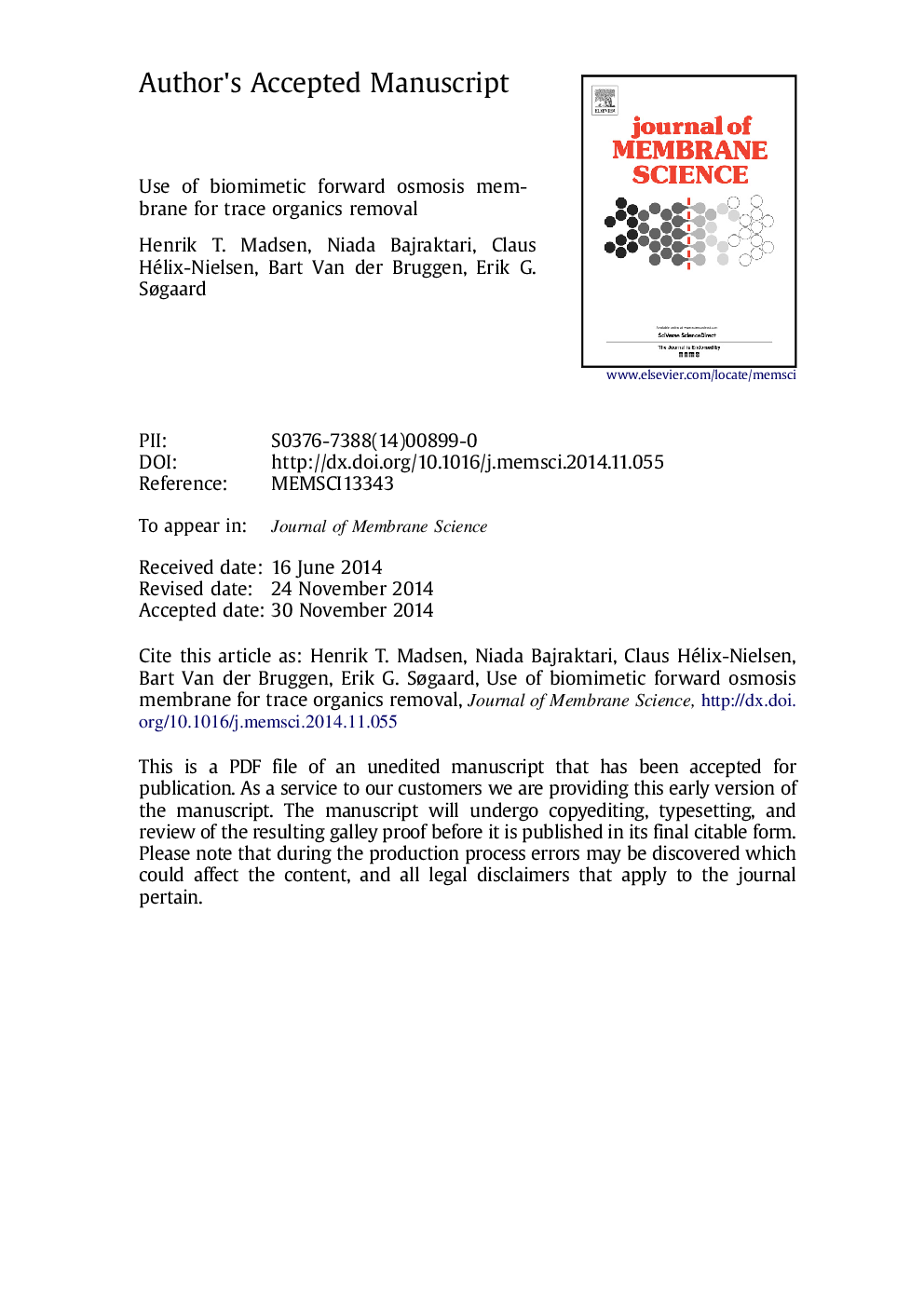| Article ID | Journal | Published Year | Pages | File Type |
|---|---|---|---|---|
| 7021734 | Journal of Membrane Science | 2015 | 13 Pages |
Abstract
The use of forward osmosis for the removal of trace organics from water has recently attracted considerable attention as an alternative to traditional pressure driven membrane filtration. However, the existing forward osmosis membranes have been found to be ineffective at rejecting small neutral organic pollutants, which limits the applicability of the forward osmosis process. In this study a newly developed biomimetic membrane was tested for the removal of three selected trace organics that can be considered as a bench marking test for a membrane׳s ability to reject small neutral organic pollutants in aqueous solution. The performance of this membrane was compared with a standard cellulose acetate forward osmosis membrane. The aquaporin membrane was found to have rejection values above 97% for all three trace organics, which was significantly higher than the cellulose acetate membrane. This difference is caused by differences in the transport mechanisms. For the cellulose acetate membrane rejection is controlled by steric hindrance, which results in a size dependent rejection of the trace organics, whereas rejection by the aquaporin membrane is controlled by diffusion of the trace organics. Furthermore, the aquaporin membrane was found to have a higher pure water flux.
Related Topics
Physical Sciences and Engineering
Chemical Engineering
Filtration and Separation
Authors
Henrik T. Madsen, Niada Bajraktari, Claus Hélix-Nielsen, Bart Van der Bruggen, Erik G. Søgaard,
